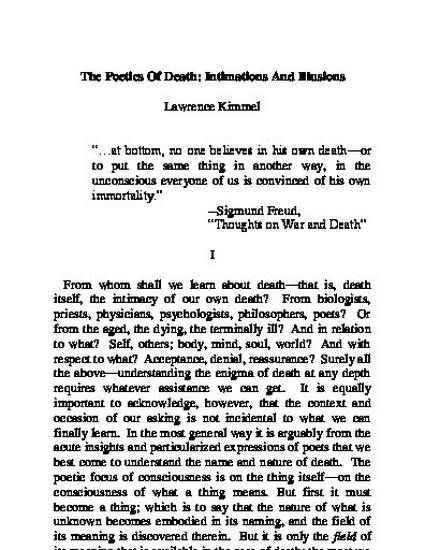
From whom shall we learn about death—that is, death itself, the intimacy of our own death? From biologists, priests, physicians, psychologists, philosophers, poets? Or from the aged, the dying, the terminally ill? And in relation to what? Self, others; body, mind, soul, world? And with respect to what? Acceptance, denial, reassurance? Surely all the above—understanding the enigma of death at any depth requires whatever assistance we can get. It is equally important to acknowledge, however, that the context and occasion of our asking is not incidental to what we can finally learn. In the most general way it is arguably from the acute insights and particularized expressions of poets that we best come to understand the name and nature of death. The poetic focus of consciousness is on the thing itself—on the consciousness of what a thing means. But first it must become a thing; which is to say that the nature of what is unknown becomes embodied in its naming, and the field of its meaning is discovered therein. But it is only the field of its meaning that is available in the case of death: the most we can hope for is some hermeneutic understanding of the mystery in which it remains embedded.
